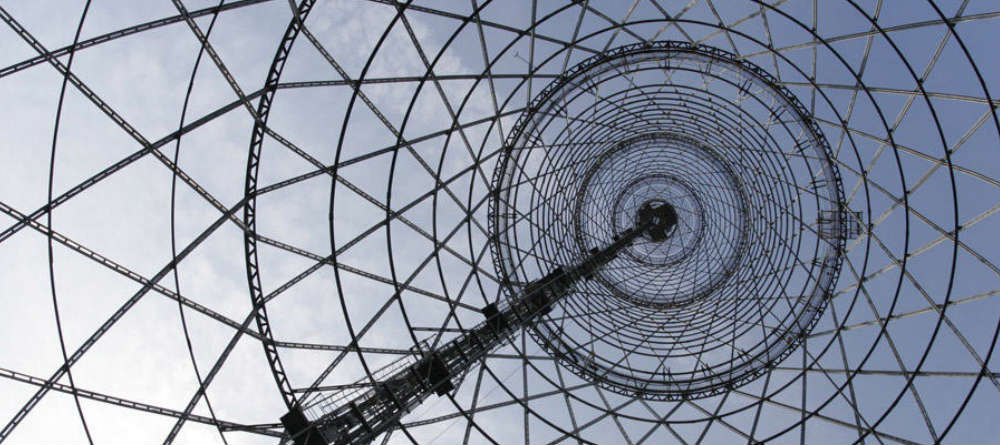Moscow’s iconic Shukhov tower to be dismantled

Shukhov radio tower, a masterpiece of avant-garde architecture in Moscow, is likely to be dismantled, renovated and re-erected in another part of the city, Russia’s Ministry of Communication has said. The decision regarding the 92-year-old steel structure has been met with outrage by several architects, many of who consider the tower a symbol of the Soviet architectural vision of the time.
Talk of the tower’s deconstruction has been rife for many years, and support for its preservation has been voiced by architects across the world, including Lord Norman Foster and art critic Andrew Graham-Dixon. Exposing potential disagreements within the government, even the Ministry of Culture is said to oppose the plans, which will cost an estimated 119 million roubles (£2m), according to a document obtained by Izvestia newspaper. Despite the initial go-ahead from the Ministry of Communication, attempts are still underway to save the structure with a petition on Change.org reaching over 2,300 signatures to date.
Built between 1919 and 1922 by Soviet architect Vladimir Shukhov, the construction of the tower marked a turning point in architectural design in Russia, with the tower the first example of metal lattices used in construction. In an interview with The Calvert Journal, Vladimir Shukhov, the great-grandson and namesake of the Soviet architect and president of the Shukhov Foundation, expressed sadness over the likelihood of the tower’s removal. “If the tower is dismantled and moved somewhere else it would be really tragic. Moreover, it’s actually illegal, as the tower is a cultural monument. The government’s actions just show that the law isn’t important in Russia,” he said.
Russian architect Maria Troshina told The Calvert Journal that it was impossible to imagine the Shukhov tower in another location. “Once destroyed it can never be built like the original, which has details crafted onto the structure by Shukhov himself,” she said. “Dismantle it and move it somewhere else and it will no longer be the Shukhov tower.”
Despite the Ministry of Communication’s announcement regarding the need to disassemble and relocate the tower, a new site has yet to be decided. “The only possible option for a solution to the problem is a two stage reconstruction and renovation of the radio tower, which stipulates in the first stage its dismantling for the conservation and preservation of elements for later restoration,” an unnamed spokesperson from the Ministry of Communication told The Moscow Times.
Sensitivity to threats over the Shukhov tower is particularly acute, given the destruction of numerous 1920s Russian buildings in recent years. Among these are the Donskie Baths in southern Moscow, razed last summer to make way for the construction of a skyscraper.
While much of the value of the Shukhov tower lies in the radical architectural techniques used, its cultural significance is also a factor in the debate. The tower’s symbolic meaning has been cited as a reason for its preservation, with its construction in the early 1920s coinciding with a time of great technological advancement in the early years of the Soviet Union. Troshina noted: “For many generations of Russians — and not only Muscovites — the Shukhov tower symbolised technical progress at a time when every Soviet home had a TV. It was a real cultural phenomenon for us, and the tower signifies that.”
Shukhov’s other successes include a railway bridge, designed and constructed in 1892, and which served as inspiration for the construction of 417 bridges built in subsequent years according to his blueprint. The light arch structures developed by Shukhov in 1890 have also become an integral part of Russian construction, found in the arched ceilings of the well trodden shopping areas Petrovsky Passage and GUM in Moscow.
Shukhov added: “With his tower, it’s like Shukhov sent a letter from the end of the 19th century to the 21st century. His techniques in architecture are still being taught to architecture students around the world. Now the people learning his technique can see the work in practice. It would be a great loss if the tower was dismantled and moved.”